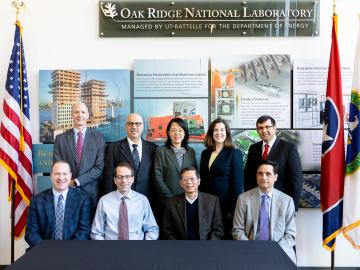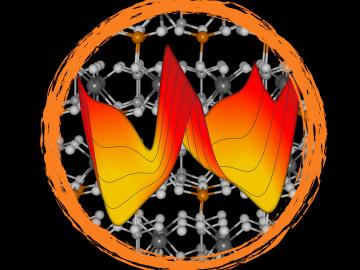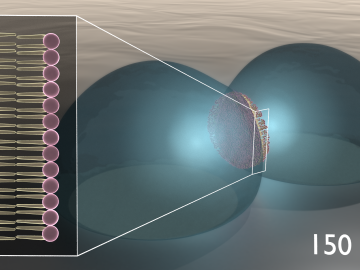Filter News
Area of Research
- (-) Clean Energy (62)
- (-) Materials (60)
- Advanced Manufacturing (6)
- Biological Systems (4)
- Biology and Environment (1)
- Building Technologies (2)
- Chemistry and Physics at Interfaces (3)
- Computer Science (1)
- Energy Frontier Research Centers (4)
- Fossil Energy (1)
- Functional Materials for Energy (3)
- Fusion Energy (2)
- Geographic Information Science and Technology (1)
- Isotope Development and Production (1)
- Materials Synthesis from Atoms to Systems (2)
- Materials Under Extremes (3)
- National Security (2)
- Neutron Science (14)
- Nuclear Science and Technology (7)
- Quantum Condensed Matter (1)
- Quantum information Science (1)
- Reactor Technology (1)
- Supercomputing (23)
- Transportation Systems (3)
News Type
News Topics
- 3-D Printing/Advanced Manufacturing (6)
- Artificial Intelligence (1)
- Bioenergy (5)
- Clean Water (1)
- Composites (1)
- Computer Science (1)
- Critical Materials (3)
- Cybersecurity (1)
- Energy Storage (1)
- Environment (4)
- Isotopes (1)
- Machine Learning (1)
- Materials Science (7)
- Microscopy (1)
- Nanotechnology (2)
- Neutron Science (3)
- Quantum Science (2)
- Security (1)
- Sustainable Energy (5)
- Transportation (2)
Media Contacts

OAK RIDGE, Tenn., Dec. 12, 2019 — Oak Ridge National Laboratory and five leading building equipment industries will collaborate to improve the energy performance of heating, air conditioning and ventilation systems and investigate climate-friendly alternative refrigerants.

The American Nuclear Society (ANS) has recognized two nuclear researchers, Julie G. Ezold and Yutai Katoh, both of the Department of Energy’s Oak Ridge National Laboratory, at its annual Winter Meeting and Nuclear Technology Expo, held in Washington, D.C.

A technology developed at the ORNL and scaled up by Vertimass LLC to convert ethanol into fuels suitable for aviation, shipping and other heavy-duty applications can be price-competitive with conventional fuels

An international team of scientists, led by the University of Manchester, has developed a metal-organic framework, or MOF, material

Michelle Kidder, a researcher at the Department of Energy's Oak Ridge National Laboratory, has been selected as the 2019 recipient of the US C3E Research Award.

A scientific team from the Department of Energy’s Oak Ridge National Laboratory and Vanderbilt University has made the first experimental observation of a material phase that had been predicted but never seen.

Researchers at the Department of Energy’s Oak Ridge National Laboratory have received five 2019 R&D 100 Awards, increasing the lab’s total to 221 since the award’s inception in 1963.

Researchers at the Department of Energy’s Oak Ridge National Laboratory, the University of Tennessee and Texas A&M University demonstrated bio-inspired devices that accelerate routes to neuromorphic, or brain-like, computing.

ORNL and The University of Toledo have entered into a memorandum of understanding for collaborative research.

Using the Titan supercomputer and the Spallation Neutron Source at the Department of Energy’s Oak Ridge National Laboratory, scientists have created the most accurate 3D model yet of an intrinsically disordered protein, revealing the ensemble of its atomic-level structures.




